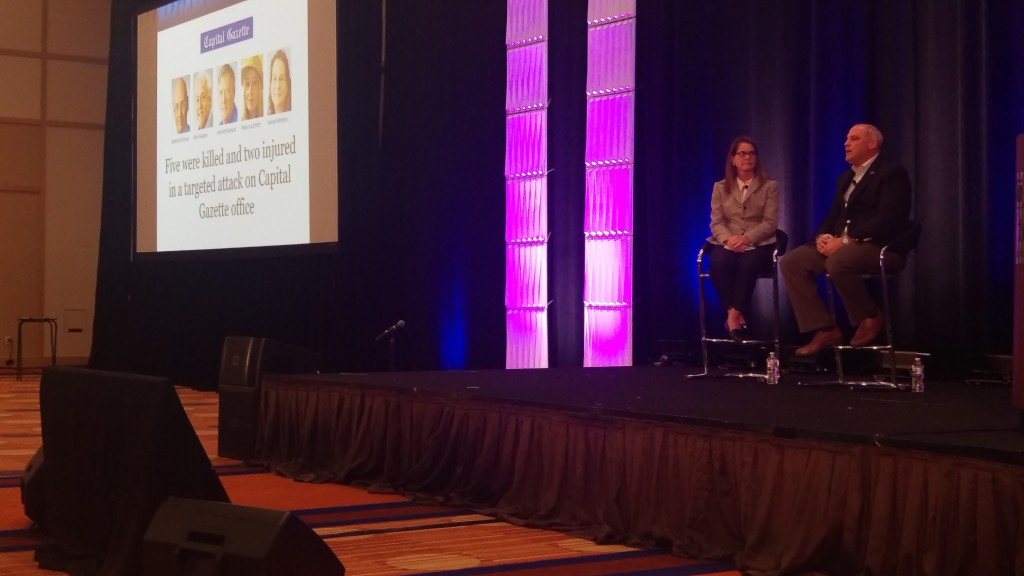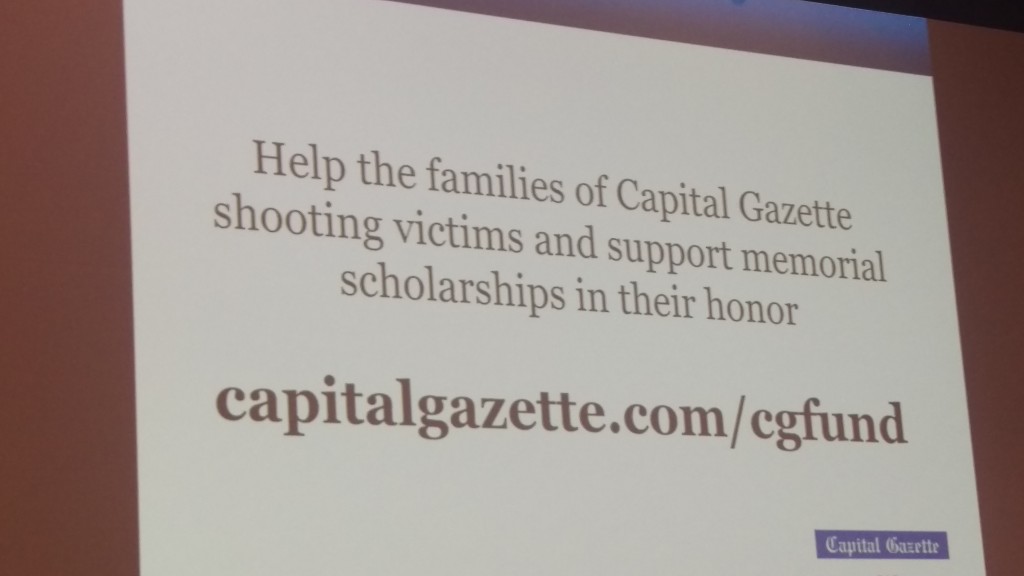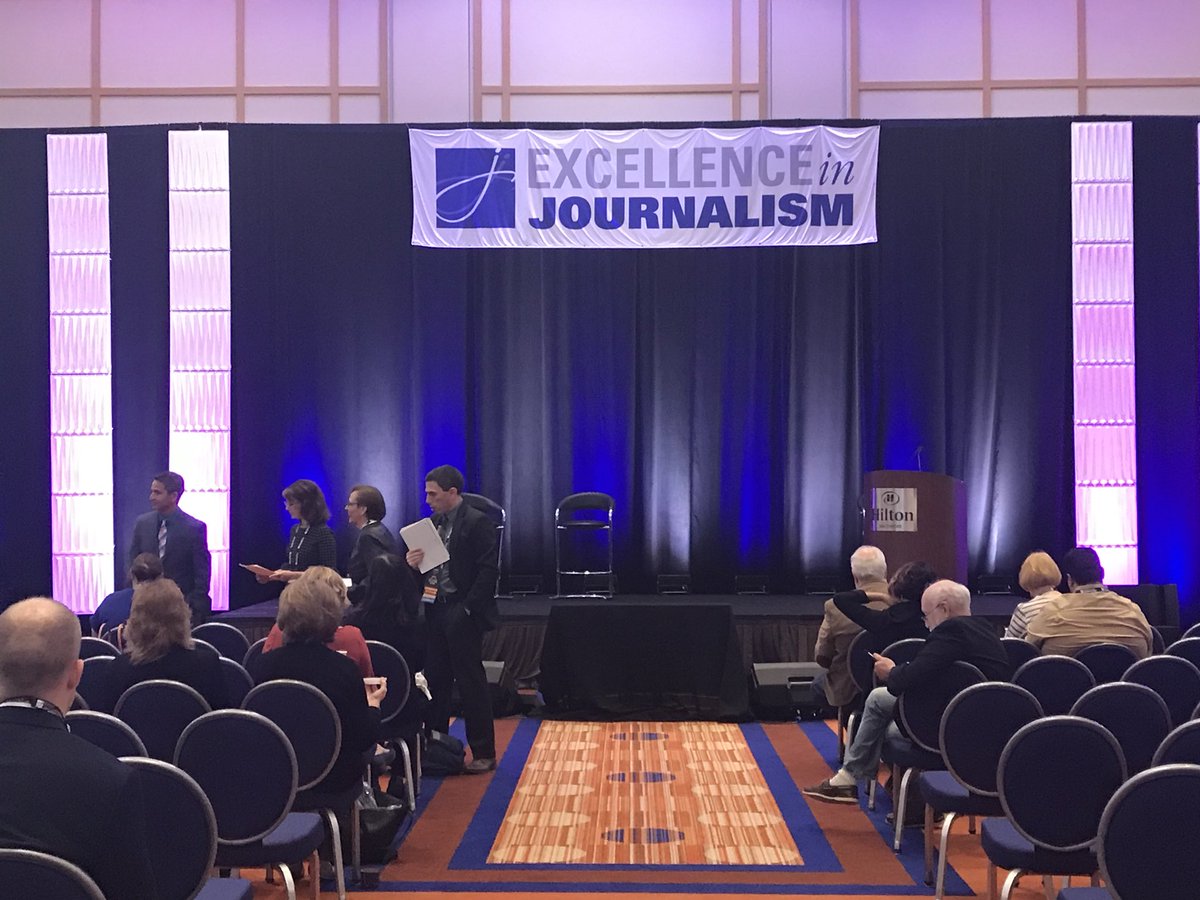
Newsroom shooting in Annapolis elicited national reaction
They put out a “damn paper” for the next-day edition after five colleagues died after a gunman stormed into their newsroom in late June and began shooting people. Some saw the carnage before them as they took cover. Some who were away from the building were tormented by their feelings of helplessness. But the Annapolis community rallied around the newspaper staff, and journalists and readers across the globe were shocked and then awed by the dedication to their jobs the staff exhibited.
The full effects are likely still playing out.
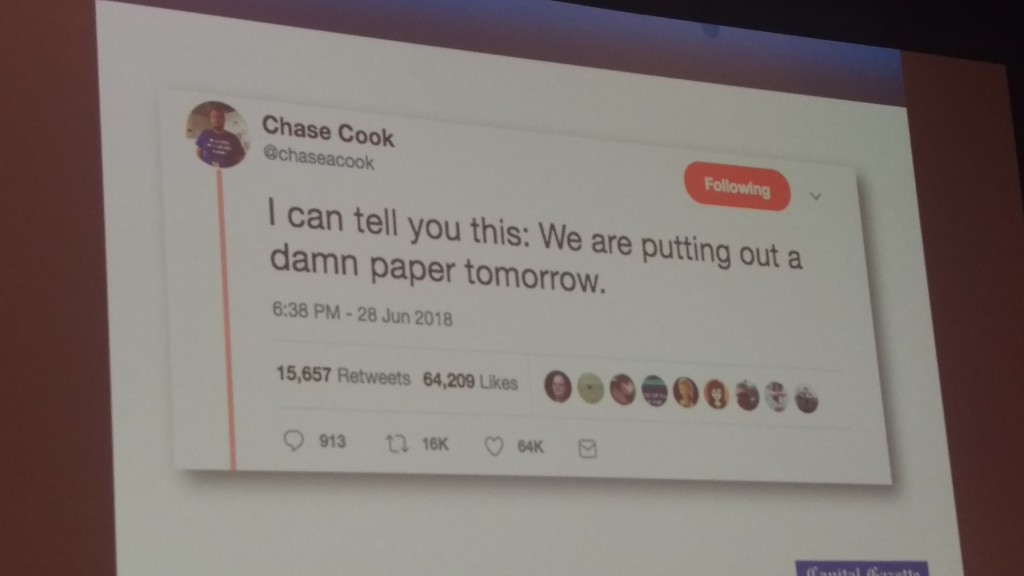
A supersession at EIJ18 in Baltimore featured Trif Alatzas, publisher and editor-in-chief of the Baltimore Sun Media Group, parent company of the Capital Gazette, talking about the effects of the tragedy that came allegedly at the hands of a disgruntled reader, and how the outpouring of community support has lifted and sustained the surviving staff. Gina Cavallaro, staff writer for the Association of the United States Army and a journalist who has covered the U.S. military in Iraq and Afghanistan, and Bruce Shapiro of the Dart Center for Journalism and Trauma, a project of the Columbia University Graduate School of Journalism, (who joined via Skype) talked about dealing with the aftermath of trauma.
Alatzas said that almost immediately the company began hearing from people all around the country who wanted to come to Annapolis to help out the staff with their daily coverage. During the Region 2 meeting at EIJ18 on Saturday morning, DC Pro member and member of the national SPJ Freelance Community Hazel Becker commended the freelance journalists she knows who had volunteered to help out the Capital Gazette staff by working from The Sun in Baltimore during the months after the shooting. The Sun had developed a volunteer system for just that purpose.
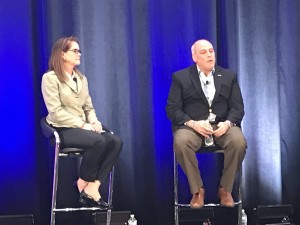
Here are some tweets from reporter Zoe Poindexter, a Georgetown U. student who was on the student EIJ News staff covering the EIJ18 convention, reporting what was said during the session:
(From Alatzas)
“We’ve talked about this as one of the darkest days in our newsroom and as one of the darkest days in American journalism.” @trifalatzas #survivingtheunthinkable #EIJ18
I am most inspired by the bravery, dedication, professionalism and sense of responsibility to their community/coworkers shown by the staff of @capitalgazette in the aftermath of the violence. #EIJ18 #survivingtheunthinkable @EIJ_News
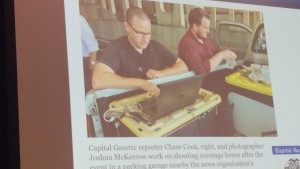
“I’m just fortunate to work with people who are good at doing their jobs.” @trifalatzas in response to [WBAL Anchor Deborah Weiner’s] @wbaldeborah’s simple yet heartfelt question “How are you doing?” #EIJ18 #survivingtheunthinkable
(From Shapiro)
Bruce Shapiro w/ @DartCenter on best practices to do our job as journalists but also taking care of our mental health. #EIJ18 @EIJ_News
Exposure to events of this magnitude can take a toll. It doesn’t mean we shouldn’t cover these subjects, but we must be aware of how it affects our health @DartCenter #survivingtheunthinkable #EIJ18 @EIJ_News
Three points Shapiro leaves us with:
- Give space to those who’ve experienced trauma
- check in with colleagues and peers and offer support
- Trauma can be experienced vicariously and directly
And some tweets from University of Maryland journalism teacher Chris Harvey:
(From Shapiro)
The Dart Center’s Bruce Shapiro said preparing journalists to cover trauma is important. You wouldn’t send a reporter to cover a football game if they knew nothing about football, he notes. #EIJ18
Before and after journalists cover critical news events, conscious peer support is needed, says Bruce Shapiro of @DartCenter. Today, more and more journalists are exposed to “awful stuff,” he says. #EIJ18 @merrillcollege
Getting therapy for PTSD really matters after a traumatic event, Bruce Shapiro of @DartCenter says. “If you think you need help, get help. There’s no downside to this,” he says. #EIJ18 @merrillcollege
(From Alatzas)
“It was really important for us to be back in Annapolis” following the shooting, @trifalatzas says. @merrillcollege #EIJ18
“What Trif is doing today is part of the healing process,” says Gina Cavallero. Talking about a tragedy helps, she said. #eij18 @merrillcollege
“We couldn’t have done this without the journalism community,” .@trifalatzas he said of the coverage of The Capital shooting. #EIJ18 @merrillcollege
And tweets from Elizabeth Donald:
(From Shapiro)
Bruce Shapiro of Dart Center for Journalism and Trauma: Mass shootings affect journalists every time; even if not victims, we are witnesses of trauma and sometimes acquainted with or related to victims. #EIJ18
Shapiro: PTSD isn’t limited to those at the scene. Reviewing raw video, other images as a steady diet takes a toll. (Note from me: photo day at a murder trial.) #EIJ18
~~~~~
There was another session at EIJ18 on “Covering [Insert Recent Mass Shooting Here]: How to Ethically Cover Mass Shootings.” Here is a link to a handout from that session.
~~~~~
Region 2 Director Andy Schotz, who helped organize the supersession, said The Capital Gazette staff did not want to receive any sort of recognition or award at the convention, so none of them were on the panel.
Schotz is still leading the charge in the sale of First Amendment T-shirts, with proceeds benefiting the Capital Gazette. For information on getting a $20 shirt, go here.
This summer, the National Press Club awarded a special President’s Award to the staff of The Capital Gazette for their continuing coverage of the newsroom shooting and aftermath. Trif Alatzas tweeted about that evening. And Capital Gazette editor Rick Hutzell was recently named the National Press Foundation‘s Benjamin C. Bradlee Editor of the Year.
The Maryland-Delaware-District of Columbia Press Association did use the June events as a springboard for an Oct. 23 seminar on “Protecting Journalists,” with information on how newsrooms can assess threats and provide safety to their reporters. See DC Pro President Jonathan Make’s personal blog coverage of that session here.
Donations to the fund for the Capital Gazette families are still being accepted. The site also links to a memorial scholarship fund.

